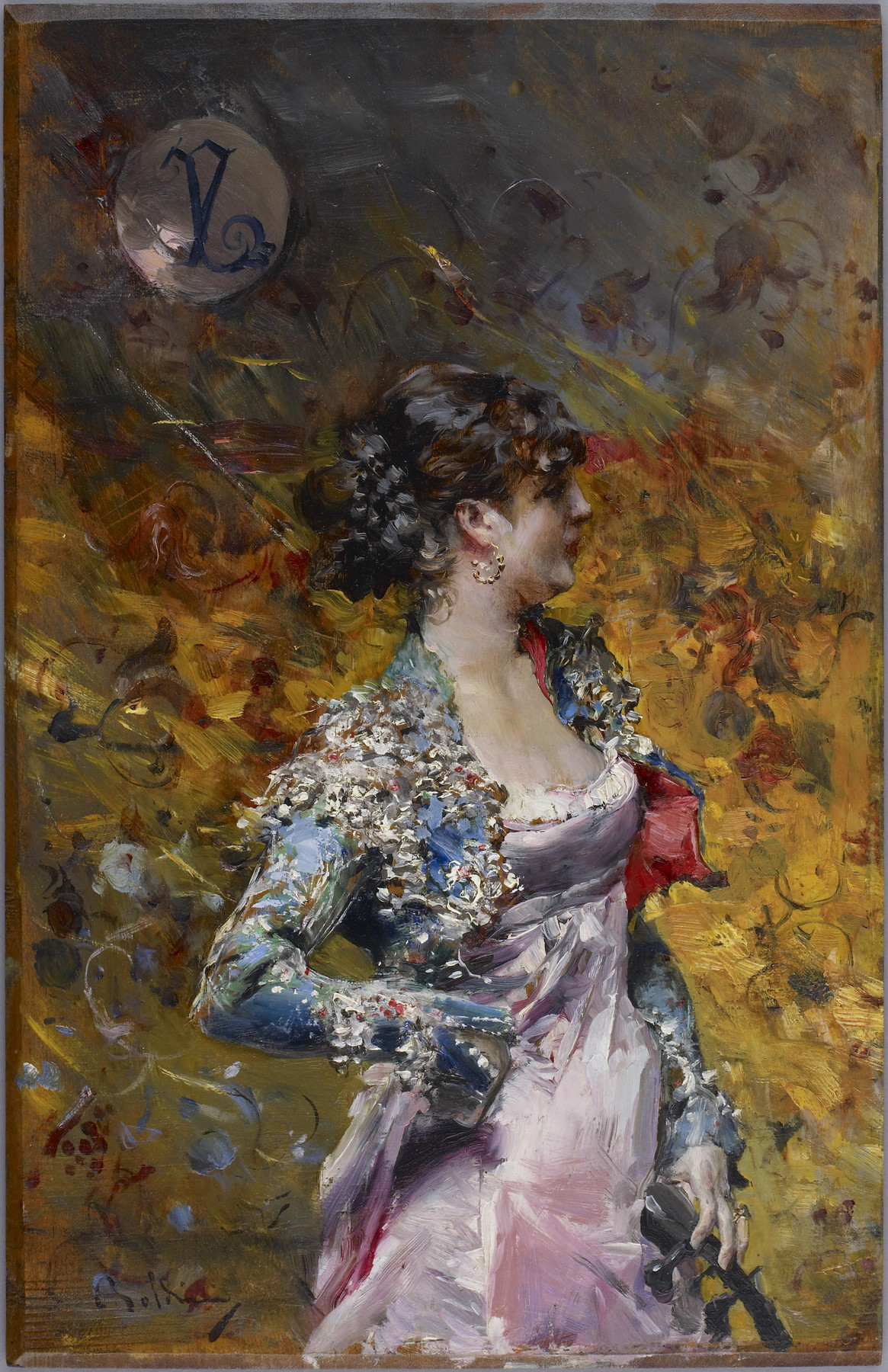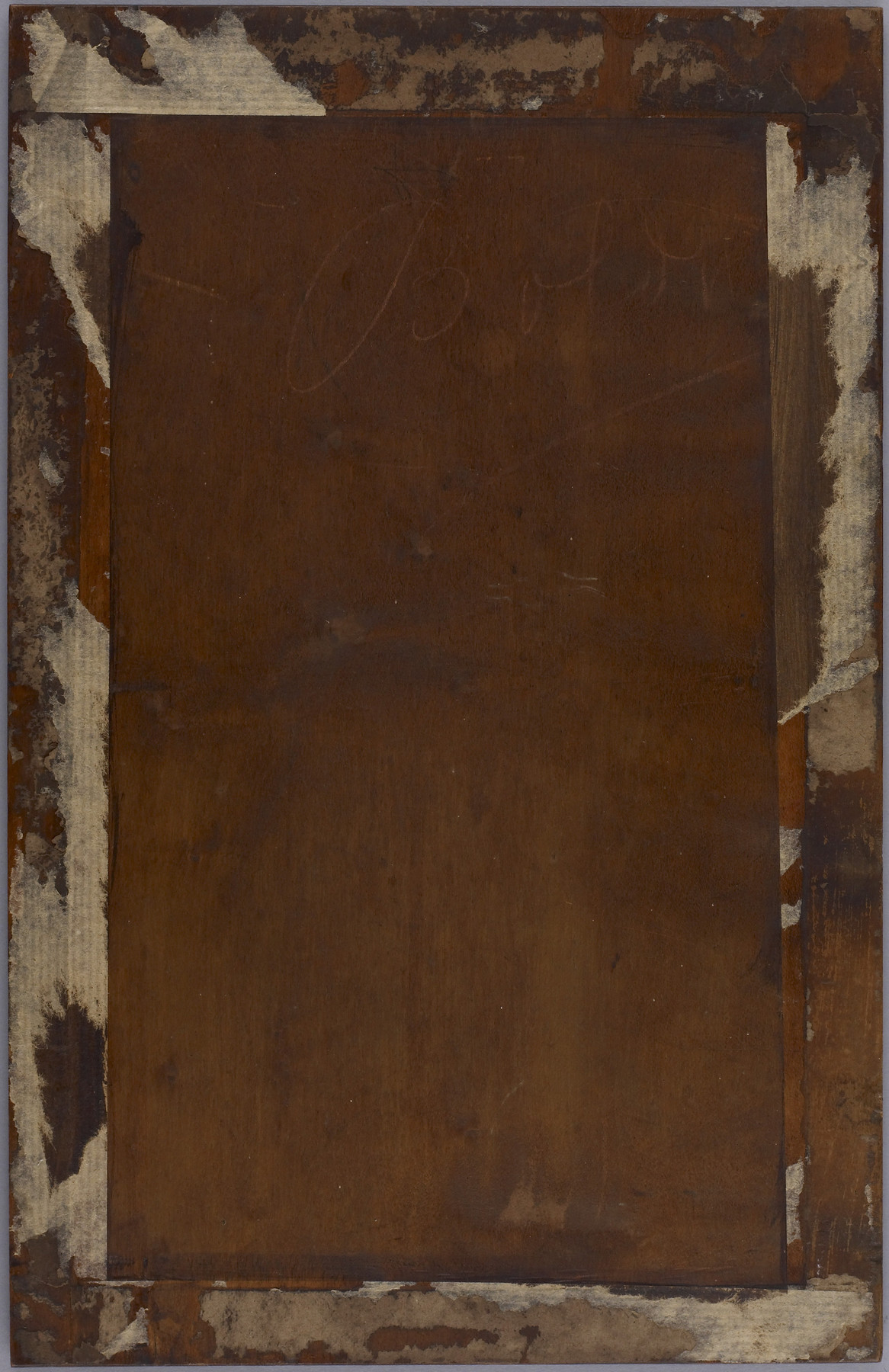Lady with a Guitar
(18th and 19th Centuries )
A woman enjoys a moment of quiet reflection, resting her guitar on her thigh. Her brilliantly embroidered bolero—a short jacket associated with bullfighting—is lined with red satin, and her pink dress traces the outline of her body. The monogram in the upper right is formed of the letters “L” and “V,” but the woman’s identity is unknown.
The painting evokes the sights and sounds of Spain, and we may imagine that its subject is a flamenco performer. Flamenco—a folkloric music tradition comprising singing and dancing—is associated with southern Spain. Boldini and other 19th-century European artists were fascinated by Spain, particularly the southern region, whose culture was shaped by Muslim Arabs; many Europeans viewed it as an exotic locale.
In the 1870s, following his relocation to Paris, Boldini painted scenes of Spain on several occasions, inspired by the Spanish painter Mariano Fortuny (1838–74), who worked with free brushstrokes in vibrant color.
Inscription
Provenance
Provenance (from the French provenir, 'to come from/forth') is the chronology of the ownership, custody, or location of a historical object. Learn more about provenance at the Walters.
Private collection, France; purchased by Alexis Bordes, Paris; purchased by James Mackinnon, Midhurst, West Sussex, England, 2013; purchased by Walters Art Museum, 2018.
Exhibitions
| 2018-2021 | Boldini and his Circle. The Walters Art Museum, Baltimore. |
Geographies
France, Paris (Place of Origin)
Measurements
H: 13 3/8 × D: 8 3/4 in. (34 × 22.3 cm); Framed H: 23 5/8 × W: 19 5/16 × D: 3 7/8 in. (60 × 49 × 9.8 cm)
Credit Line
Museum purchase with funds provided by the bequest of Margaret Hammond Cooke, 2017
Location in Museum
Not on view
Accession Number
In libraries, galleries, museums, and archives, an accession number is a unique identifier assigned to each object in the collection.
In libraries, galleries, museums, and archives, an accession number is a unique identifier assigned to each object in the collection.
37.2936




